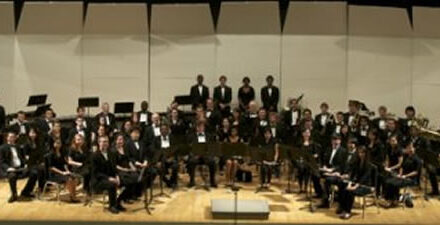At the end of his life, C.P.E. Bach wrote three quartets for fortepiano, cello, flute, and… (wait for it) … viola. And he began the first quartet, in A minor (Wq 93), with the twitchiest, most disjointed, unmusical Andantino imaginable. What starts out like the world’s worst viola joke ends up being spectacular music.
At the Music House the weather was cold, the room was cold, the audience was cold, the performers were cold, and the instruments were cold. The pre-concert tuning sounded painful; it never sounded like the flute or viola was within a half step of each other and yet they were obviously in tune. Only the cello and piano sounded like they were even on speaking terms. And the four players started out on what sounded like the worst Katzenjammer imaginable. I winced and wept and wondered how I could possibly sit through the first quartet, much less three of them. I was looking for a hole to crawl into. And I was looking for a hole to bury two old friends and their two ought-to-sound-first-rate musical companions. But John O’Brien played his fortepiano like the most careful wading bird negotiating some briny marsh. And Rebecca Troxler and her flute began to warm up and make the music I am accustomed to. And Christopher Nunnally wielded his bow with consummate grace, playing notes and rests alike with beautiful gestures, making beautiful sounds. And Martha Perry‘s 1736 viola turned the joke on me. Only C.P.E. Bach was unable, from his grave in Hamburg, to rework the Andantino to be musical.
The Largo e sostenuto second movement was much more musical, with lots of good singing tone. The third movement, Allegro assai, was cohesive and musical, although the composition was still very rough and argumentative.
The second quartet, in D major (Wq 94) began spritely enough with an Allegretto, but the composition was like the first, disjointed and argumentative. The second movement, marked Sehr langsam und ausgehalten, was just that, with especially smooth playing on viola by Martha Perry. And in turn, everybody else was lovely in this movement. Christopher Nunnally’s playing was perfect, completely free of vibrato except as an ornament.
Following intermission with a gracious plenty of very good wine and very good hors d’ouevre by The Kinston Trio (a special callout to the meatballs in little taco cups), the players seemed to be very awake and warmed up, even though Troxler returned sporting a nice pair of cable-knit lambswool wrist warmers. Nunnally continued to play with a completely justified self assurance, throwing his whole body, arms, legs, and expression into his art. The center movement of the third quartet (in G major, Wq 95), an Adagio, delicately showcased all parts in turn, with high marks to Nunnally, even though his part mostly doubles the piano bass line in classic continuo style. The movement tapers off to nothing, much harder in the execution than a movement that rages its way to a finale. The third movement, marked merely Presto (as if presto could ever be mere) set off on a merry fugal chase, completely reminiscent of J.S. Bach. The players all passed the theme back and forth, answering each other across the landscape of the chase. Audacious C.P.E. even had a couple of places where the piano answered itself, beautifully managed by O’Brien. The movement is powerful, with a driving rhythm and complete Lutheran seriousness, totally unlike the audaciousness of most of the other movements. Troxler, clearly in her element now, showed several times the distinctive turn of her head after tearing off a long run, as if to say, take that, forces of evil. All my pain at the beginning was now erased, flown away with the absolute perfection of this last movement.











